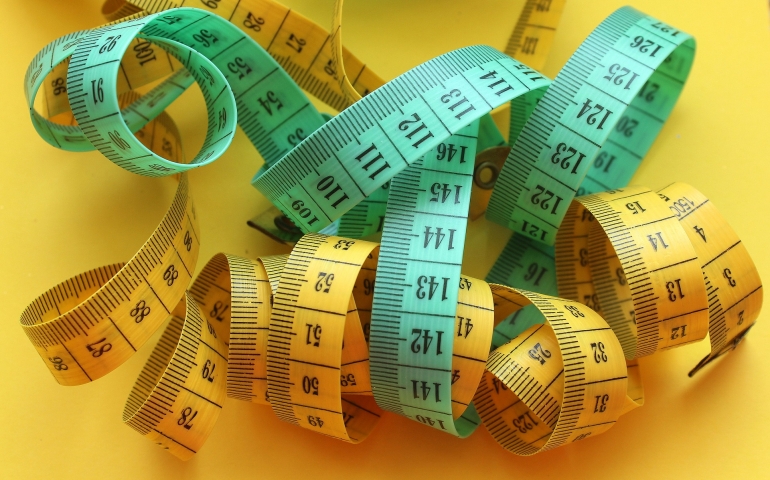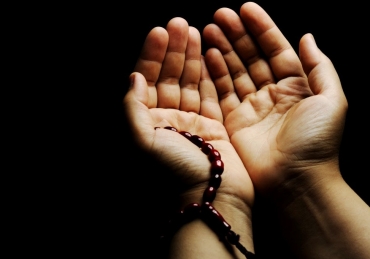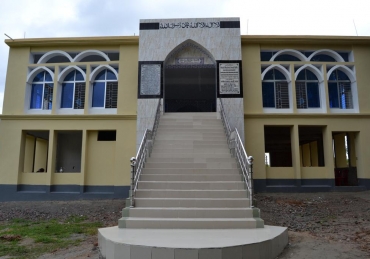The length of the Kurtā (Qamīṣ) of the Prophet ﷺ
By Muḥaddith al-ʿAṣr Shaykh Muḥammad Yūnus Jownpūrī (b. 1355/1936 – )
Question: How long was the Kurtā (Qamīṣ) of the Prophet ﷺ?
Answer: The narrations differ regarding the length of the Kurtā of the Prophet ﷺ.
It is narrated in the Sunan of Ibn Mājah (p. 264) from Ibn ʿAbbās (may Allah be pleased with him) who said, “The Prophet ﷺ used to wear a Kurtā, the length and sleeves of which were short”.[1] Bayhaqī relates in Shuʿab al-Īmān[2], as mentioned in the commentary of Shamāʾil of Munāwī (1: 134), via Muslim al-Aʿwar who relates from Anas (may Allah be pleased with him) that he ﷺ had a cotton Kurtā, which was short in length and had short sleeves.[3]
These two narrations indicate that the blessed Kurtā (Qamīṣ) of the Prophet ﷺ would not be very long.
However, as mentioned in the commentary of al-Mawāhib al-Ladunniyyah (5: 5), it is narrated by Ḥākim[4] who classifies it as authentic and by Abū al-Shaykh from Ibn ʿAbbās (may Allah be pleased with him) that the messenger of Allah ﷺ [once] wore a Qamīṣ (Kurtā) and it was above the ankles and its sleeves reached the fingers. Ibn ʿAsākir[5] also narrated this as mentioned in al-Jāmiʿ al-Ṣagīr, and its words are: He would wear a Qamīṣ (Kurtā) [that would reach] above the ankles with equal sized sleeves reaching the tips of the fingers.[6] Ibn al-Jawzī in al-Wafā has attributed this narration with these words [of Ibn ʿAsākir] to Abū al-Shaykh, as mentioned in the commentary of Shamāʾil by [Mullā ʿAlī] al-Qārī (1: 135). Bayhaqī[7] has also narrated a similar narration in Shuʿab al-Īmān as mentioned in Munāwī’s commentary of Shamāʾil.
This narration indicates that the Kurtā (Qamīṣ) of the Prophet ﷺ was long.
The views of the scholars have differed as a result of the different narrations. ʿAllāmah Ibn al-Qayyim writes in Zād al-Maʿād Fī Hady Khayr al-ʿIbād (1: 36): “And his Qamīṣ (Kurtā) was made of cotton, it was short in length and had short sleeves.” ʿAllāmah Qasṭalānī writes in al-Mawāhib al-Ladunniyyah (5: 5): “And the hem of his Qamīṣ and cloak would reach mid-calf.”
However, there is no contradiction between these narrations. Rather, the Prophet ﷺ sometimes wore one and sometimes the other, as is apparent from the words of Ḥākim: لبس قمیصا he wore a Qamīṣ [once]. Thus, this is the point that one should wear what is available.
However, the jurists have regarded the Kurtā (Qamīṣ) reaching mid-calf as Sunnah, as mentioned by [Ibn ʿĀbidīn] al-Shāmī in the chapter of Karāhah (abhorrence). Most probably these jurists gave preference to the second narration because it covers more of the body. However, this is applicable when one avoids being pretentious (Takalluf), otherwise, one should wear what is available. This is the established position as highlighted by Ibn al-Qayyim.[8]
Allah knows best
Written by servant Muḥammad Yūnus
12 Rajab 1384 Hijrī
Translation and footnotes by Yusuf Shabbir, 7 Jumādā al-Thāniyah 1437 / 16 March 2016
Source: al-Yawāqīt al-Ghāliyah (2: 56)
Footnotes
[1] The term short (Qaṣīr) should not be misunderstood for the modern day shirt. Rather, it is longer covering the ʿAwrah including the thighs and is shorter than the long Qamīṣ that would extend to between mid calf and the ankles. ʿAllāmah Munāwī (d. 1031/1622) states in Fayḍ al-Qadīr (5: 246) that the shorter Qamīṣ is less constraining and therefore easier for movement.
[2] Shuʿab al-Īmān (8: 241).
[3] The term short (Qaṣīr) should not be misunderstood for the modern day short sleeves between the shoulder and the elbow. Rather, it refers to the sleeve extending to the wrist which is ‘short’ compared to sleeves that extend to the fingers. See al-Ḥāwī of Suyūṭī (1: 84). It is worth noting that scholars have disliked wide sleeves and some have interpreted Qaṣīr as short in length and width. See Ḥāshiya al-Sindī ʿAlā Sunan Ibn Mājah (2: 372) and Zād al-Maʿād (1: 135).
[4] Al-Mustadrak (4: 217).
[5] Tārikh Dimashq (4: 195).
[6] ʿAllāmah Munāwī (d. 1031/1622) is of the view that the sleeve would reach the wrist as mentioned in a narration of Sunan Abū Dawūd (4027) and Sunan al-Tirmidhī (1765), and that the Prophet ﷺ only had one Qamīṣ as mentioned in a narration of Musnad al-Bazzār (10: 75) and al-Muʿjam al-Awsaṭ (6: 31). However, Ḥāfiẓ ʿIrāqī (d. 806/1404) is of the view that the Prophet ﷺ had two Qamīṣ; the sleeves of one reached the wrist whilst the other reached the finger tips. See Fayḍ al-Qadīr (5: 246).
[7] Shuʿab al-Īmān (8: 243).
[8] ʿAllāmah Ibn al-Ḥāj al-Mālikī (d. 737/1336) explains in al-Madhkal (1: 153) that the Prophet ﷺ did not have a specific dress code that he always adhered to. Rather, he would wear whatever was readily available without being pretentious. Thus, sometimes he would come out with a hat, turban and sheet (Ridāʾ), sometimes with the hat and turban, sometimes with the hat and sometimes without all three items.






